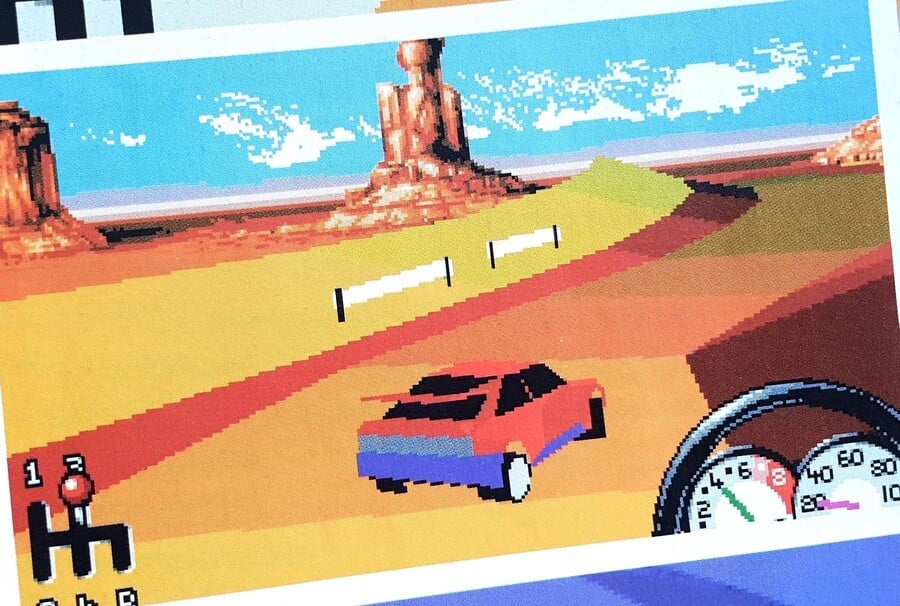
1994 was the year that 3D gaming truly came of age in the console arena. While both Nintendo and Sega had dabbled in the three-dimensional realm prior to this – with titles such as Star Fox and Virtua Racing – '94 marked the point where real-time 3D visuals were the expected norm, rather than a technical outlier; the ill-fated 3DO and Atari Jaguar had attempted to spearhead this graphical revolution a year earlier, but it would be the release of the Sony PlayStation and Sega Saturn which would truly hammer home the fact that 3D was the future, and the old-fashioned 16-bit consoles were on the way out.
This paradigm shift left a lot of developers in a quandary about which projects they should be putting into production; many were burnt badly by the advent of CD-ROM, with millions of dollars being thrown at expensive FMV titles which proved to be a costly distraction rather than the future of interactive entertainment. One such firm stuck at these crossroads was UK-based Elite Systems, which – back in 1994 – had a decade of experience behind it and was therefore considered something of a veteran. In fact, during the '80s it was seen as one of the biggest publishers in the country, alongside the likes of Ocean and US Gold, and between them this trio dominated the 'Software House Of The Year' category of the annual Golden Joysticks Awards.
The amazing success Elite had achieved on home computers like the Commodore 64 and ZX Spectrum wasn't replicated quite as well on 16-bit platforms such as the Amiga and Atari ST, but a move into publishing for consoles had thrown up some commercial good fortune; Elite published games such as Dragon's Lair and Joe & Mac: Caveman Ninja on the NES, SNES and Game Boy. It was clear that home computers were losing ground to dedicated gaming systems and by 1994, Elite was throwing its full weight behind console development.
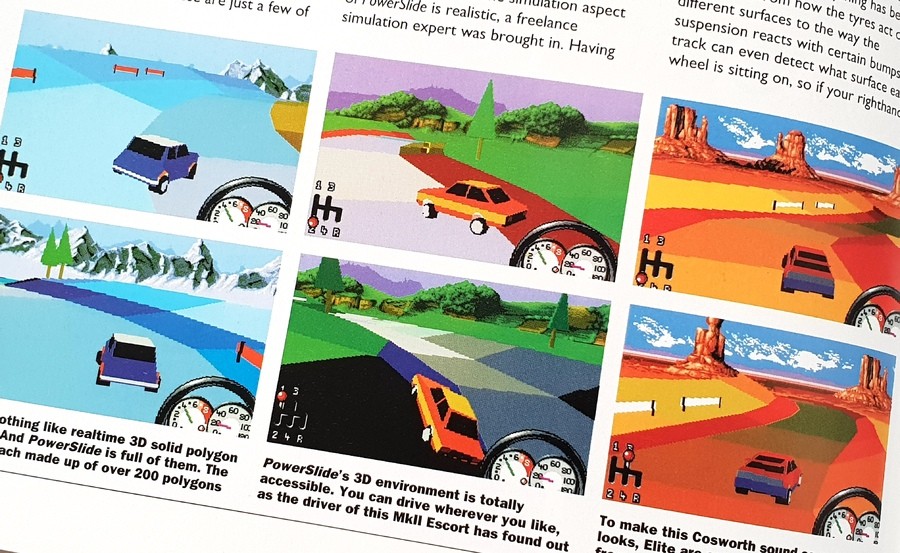
Around this time, news broke that Elite was working on two new titles for the SNES, both of which would utilise the second generation of Nintendo's Super FX hardware. Super FX, in case you're unaware, was a chip designed by UK company Argonaut which could be inserted inside cartridges and bestow the SNES with remarkable 3D capabilities. Star Fox was the first indication of what this tiny piece of silicon was capable of, but Stunt Race FX soon followed and gave a tantalising glimpse of how the tech could be used to create an immersive 3D racing game.
The decision was made to begin work on the SNES, with the Super FX-powered GSU-1A chip being the target hardware. Elite – alongside its internal development team MotiveTime, which had been founded at the end of the '80s – drew up plans for two racing games that would cater for two different sets of fans; PowerSlide would focus on providing a realistic racing experience while Dirt Racer would provide Sega Rally-style off-road arcade action. "PowerSlide and Dirt Racer were independently developed by two loosely connected in-house teams," Elite Systems director and co-founder Steve Wilcox tells us. "Development of the former was led by Rick Frankish – who has been a Senior Programmer at Rockstar Leeds for the last dozen years – while the latter was led by Chris Nash. PowerSlide was intended to be an authentic, track-based simulation whilst Dirt Racer was intended to be an off-road romp with benefits, those benefits including real-world vehicle dynamics."
The Super FX hardware was instrumental in achieving Elite and MotiveTime's vision for the two games. "Nintendo’s Super FX hardware created an exciting opportunity to work on fully 3D console games in the days – and indeed years – before the original PlayStation made doing such things routine," explains Wilcox. PowerSlide was perhaps the most high-profile of the pair, and received a considerable amount of hype at the time of development – much of which was, given the ambitious scope of the project, justified. "One of the key technical goals for PowerSlide was to implement rigid-body dynamics in a driving simulation for a games console," continues Wilcox. "By doing this we aimed not only to replicate the ‘look’ but also to mimic the ‘feel’ of driving performance vehicles."
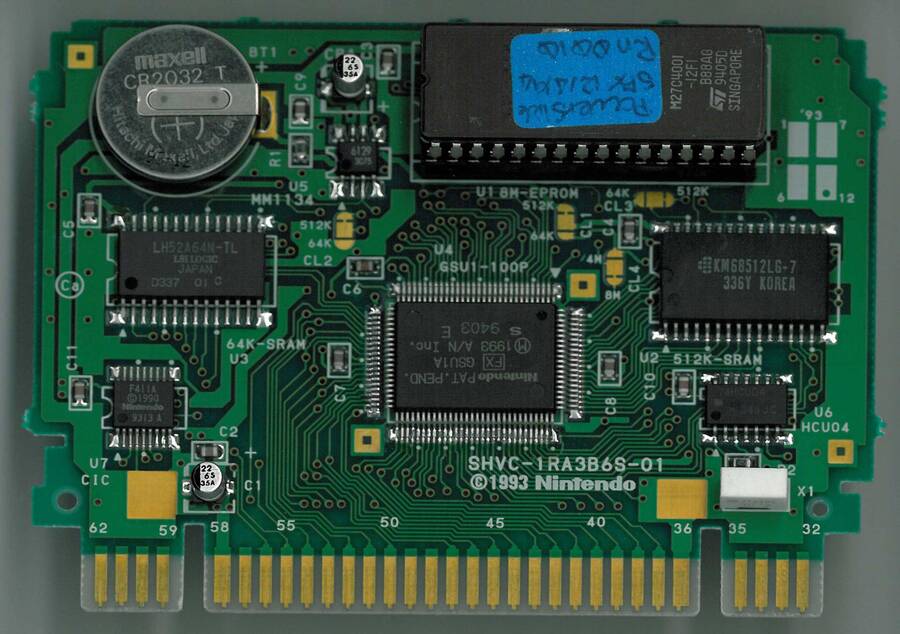
Speaking to EDGE magazine in April 1994, PowerSlide lead programmer Rick Frankish lamented the fact that so few racing titles at the time took the simulation side of things seriously enough. "Just about every car simulation I've seen, perhaps with the exception of Formula 1, hasn't simulated driving a car. Apart from the realistic engine noise, most games have completely fudged the way the cars actually move. In PowerSlide we're using real simulation technology to make the cars drive well and feel right. But for all this, the game won't be boring; it's going to be action-packed and realistic."
Such was Elite and MotiveTime's desire to create a truly authentic experience, a specialist in car simulation was commissioned to visit the studio and provide valuable feedback. Torquil Ross-Martin from the University of Bath was that man and was well suited to the job thanks to his work in the automotive industry. Ross-Martin's work included considering the way in which a car's tyres reacted to different surfaces, such as tarmac and grass. Whereas most racing games simply slowed your car down if it drove onto mud, grass or anything that wasn't a solid road surface, Motivetime's aim was to create a realistic situation where, when one tyre touched a different surface, the car would react accordingly, with the vehicle being thrown into a skid even if a single wheel touched, say, a frozen surface.
Thanks to the power of the GSU-1A Super FX chip – which ran at 21MHz, twice the clock speed of the original MARIO CHIP 1 variant inside Star Fox – PowerSlide included a split-screen two-player mode; this naturally placed additional strain on the hardware as it was having to render everything twice, but concessions were made to ensure smooth performance. Another revelation mooted in the EDGE interview was a possible connection with a leading automobile manufacturer, with the aim being to include 'real world' cars in the finished game.
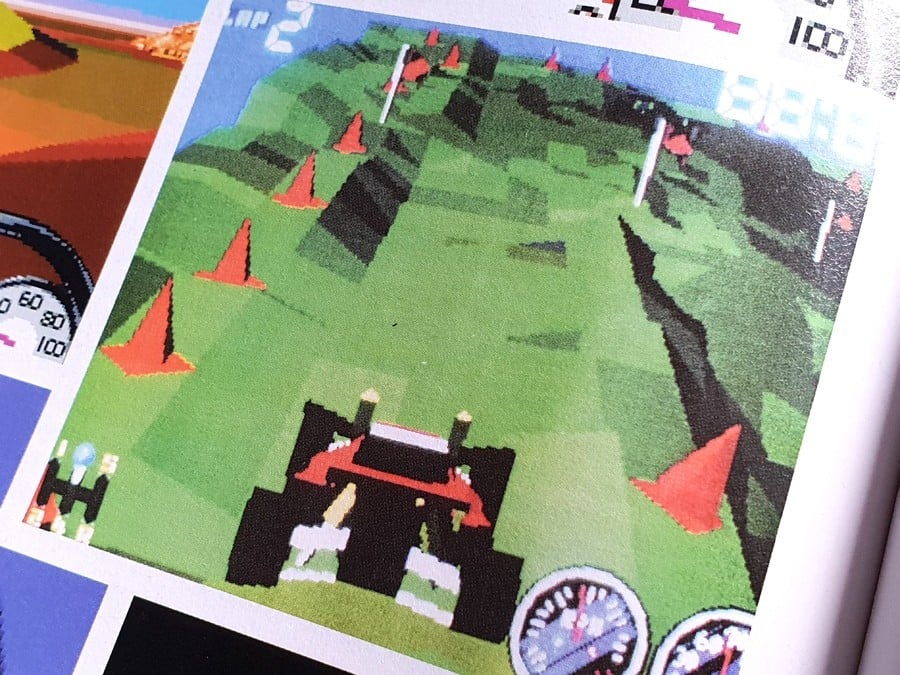
PowerSlide was, on paper at least, shaping up to be quite the racing game; a Gran Turismo for the SNES before Gran Turismo even existed, if you will. However, it never saw the light of day. "Development of PowerSlide ceased when it was perhaps 70 percent complete, because the cost of the cartridges on which it was to be manufactured and sold had become such that they made it uneconomic to release," says Wilcox. The proposed PC and 3DO versions – which were being handled by Maelstrom Games and featured full texture-mapping – were also canned before launch, although a playable edition was released not so long ago.
While the game may not have made it to market, its legacy can be found in the other racing titles released by Elite over the years, such as Test Drive: Off Road (PC and PlayStation), Ford Racing (PC, PlayStation and a Sega arcade unit) and Grand Touring (PC and PlayStation). PowerSlide's sibling fared better and actually made it to market. "Development of Dirt Racer was completed and it received a limited, albeit Europe-only, commercial release," continues Wilcox. Launched in 1995, Dirt Racer looked rather less impressive than initial shots had suggested in 1994, and was on the receiving end of some particularly scathing reviews. Wilcox admits that the reception wasn't as positive as was expected, and he shoulders some of the blame. "Had it included ‘driver aids’ at the time of its initial release – the fact that it didn’t was, ultimately, my error – it would surely have ranked as one of Elite’s most accomplished releases."
You might assume that PowerSlide's story ends there; a bold attempt to bring realistic racing to console owners that was scuppered by the harsh commercial realities of the '90s cartridge-based console market. However, Elite Systems – which continues to operate today and has most recently been involved with the Recreated ZX Spectrum project – is currently investigating the possibility of releasing PowerSlide on a physical SNES cartridge. "There’s a binary of the Super Famicom version of PowerSlide on the laptop from which I'm writing to you," reveals Wilcox. "We’ve been talking with the usual suspects for a couple of years about completing and releasing PowerSlide for Nintendo's Super FX hardware. More recently still, we’ve committed some resources and we’re now going to make that happen."
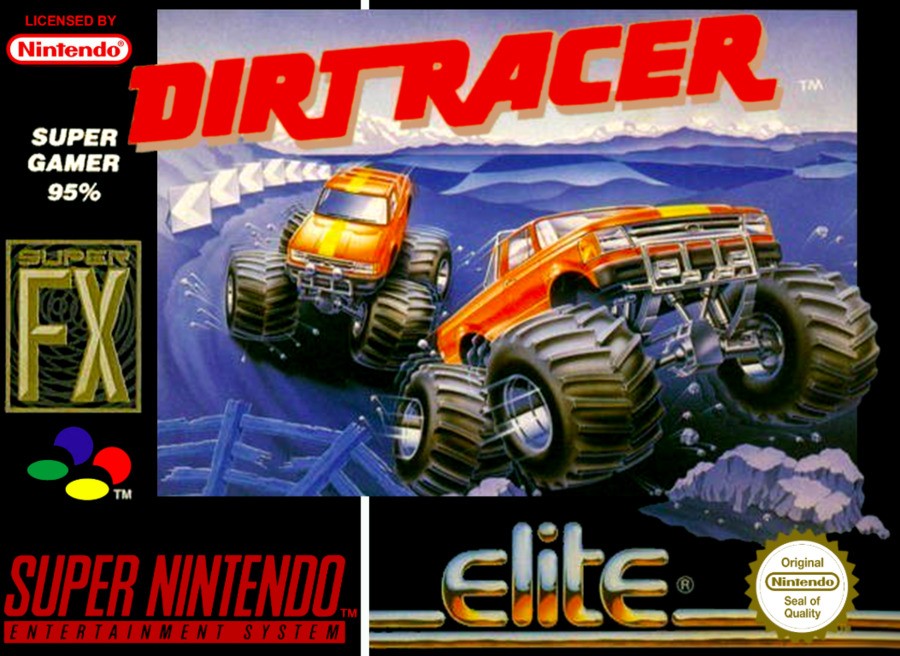
And the much-maligned Dirt Racer? "We’re looking at adding those ‘driver aids’, as the game was technically and aesthetically awesome but controlling the vehicles was considered, by some, to have been too challenging. We'd then release the enhanced game globally. As you know there’s a significant scene associated with the release of previously unfinished or unreleased games. Limited-edition releases on physical media are particularly sought-after and so that would be our goal for these titles." Indeed, the SNES has enjoyed a flood of 'new' games in recent years, such as Nightmare Busters, Unholy Night and the forthcoming R-Type Returns.
As for how Elite proposes to manufacture a game which uses a chip which is no longer in active production, Wilcox admits that the project is still very much at the planning stage and that potential solutions – such as 'System-on-a-Chip' hardware emulation or an FPGA option – will be considered at a later date. "It’s too early to answer that question," he says. "As producers it’s our job to facilitate the process, not to decide how it’s done. We’ll take our development and manufacturing partners’ advice on that. That said, we’d be pleasantly surprised if sourcing the original Super FX chip presented itself as an option."
Wilcox says that crowdfunding - which Elite used to put the Recreated ZX Spectrum into production - is also a potential option, but the company is open to taking other routes when it comes to getting these games to market. "Some of the discussions we’ve had have been on the basis that a third-party develops and manufactures under licence from us. Others have been on the basis that we commission both the development and the manufacture. In the former case, it’s not unreasonable to expect any licensee might wish to explore crowdfunding. In the latter case, we’d most likely simply publish the game – or games – ourselves." However this is achieved, it will be fascinating to see how PowerSlide shapes up against racers in 2018. While its ambitious pursuit of realism might seem less noteworthy in the age of Forza and Project Cars, it looked set to push Nintendo's 16-bit hardware to its very limit over two decades ago - and should make for an interesting history lesson - and collector's item - should Elite prove successful in resurrecting it after all this time.





Comments 24
Wow, excellent! I remember seeing this and FX Fighter (which did came out on PC) feature several times on Super Play and Nintendo Power and was sad to see it quietly being canned. Looking forward to this!
When I remember those first 3D games I get the feeling that people (including me) were really impressed by something that wasn't really "better" than what he had been playing till then. I look at Virtua Racing now, for example, and I wonder why I liked it. Hard to explain both why I liked those visuals and this feeling I have now. I just feel that the top 2d games were much more fun than that 3d "revolution", but i acknowledge its importance
@John_Deacon I still love Virtua Racing - Music is great too. In car graphics view (plus multiple views), sparks from the scrapes, manual and auto gearbox... it was fantastic and obviously especially high end graphics for MegaDrive (Genesis).
Hope it gets released.
@John_Deacon I really enjoyed both Star Fox and Stunt Race FX, but I knew even as a kid that they were a new thing and weren't mature yet. Particularly with Stunt Race FX, that ran at like 10 fps at times, but I still loved it.
@John_Deacon
I was an avid reader of computer magazines during this time. I remember getting caught up in the hype. Actually seeing it in motion on a shop demo unit, that was when you understood the hype and magic. I'd cycle with a friend into town, after school just to have a quick play.
In the end when I finally got my own copy of VR it was corrupt/faulty, never got a replacement. Until 5 yrs ago I picked an ebay copy, if Polymega works out I might get to play it
I remember Stunt Race FX being something of a let down for me. Maybe this would have been a better attempt to utilise the technology of the Super FX chip?
@Shiryu FX Fighter Yesssssssss , i had the EGM with that in and i was salivating at the thought of getting a proper 3D fighter.
Some games die for a reason. This one wears it proudly with poopy graphics. Virtua Racing on the Genesis looks amazing compared to this steaming pile of dog doo doo. Would love to see gameplay footage to see if I'm right.
I loved Stunt Race FX! It won't hold up well now but for what it was I enjoyed the heck out of it.
Make it happen and I'll buy it. My Analog Super Nt needs more games to a test.
@Shiryu OMG, I had that, with my VooDoo Graphics card!
It's a shame that Elite couldn't have worked with Nintendo to get Powerslide released on the SNES Classic. They could have marketed the system as including two never before released SNES Super FX games (Starfox 2 and Powerslide). It would have been great, and a much-better alternative than releasing the game on a SNES cartridge in 2018.
Loved me some Stunt Race FX. If they brought that game back and got it to 60fps, I’d buy it 10 times in a row.
Super FX was pretty interesting before the 32-bit era, but now it is just a retro kinda thing, worthwhile for a classic like Star Fox, but not really that good outside of it. I guess it's an interesting piece of history.
Yes please! I’d love to see this! I own Nightmare Busters and Unholy Night, and have R Type on preorder. While the game’s aren’t always the best of those eras,, it is very cool to play these unrealeased “new games”, as if they had just released. Build it and they will come!
Loved a bit of Stunt Race FX way back, always played as the bike!
I say release it.
And on a kinda similar note, check out how impressive this 3D game is on the frikin' Virtual Boy (and pay attention to how smoothly it runs in particular):
Having recently played a bunch of Virtual Boy games on my Oculus Rift via the vbjin-ovr Virtual Boy emulator*, I honestly think the machine could have been a big hit if the screen wasn't quite so headache inducing, the battery life was better, and you could actually wear it like a proper headset without having to put it on a table with the stupid stand--but I guess we'll never know.
*https://inceptionalnews.wordpress.com/2018/07/11/playing-virtual-boy-on-oculus-rift/
@Bod2019 Never got a replacement? Was it in floppy disks or CD at the time?
@FTL Considering what the Mega Drive was made for, it was surely a miracle! Totally agree!
I don't know why I don't have that feeling of shock I had when I saw VR for the first time. And I'm the kind of guy who looks at some NES games and says "holy God, how did they make such great graphics?! or get shocked when I see some zoom and rotation in some SNES games. It's a strange feeling with VR, I have to admit
@blackice85 yeah, now that you mentioned the fps I can say that I had the same impression at that time.
But Star Fox, I loved it. There's no denying that!
@John_Deacon
If I remember rightly my Mum ordered it for me from a home catalogue at the time, took ages to arrive after launch i n the first place, so never bothered ordering a replacement. Seems some carts had iffy SVP chips, everytime I tried playing mine the car was driving in the sky, the track polygons weren't anywhere to be seen, no amount of reseting would solve it, a gutted 12/13 yr old I was.
@Bod2019 All right. I thought you had bought a PC copy. It was a cart....
Wow! This would be sooo cool!
Tap here to load 24 comments
Leave A Comment
Hold on there, you need to login to post a comment...